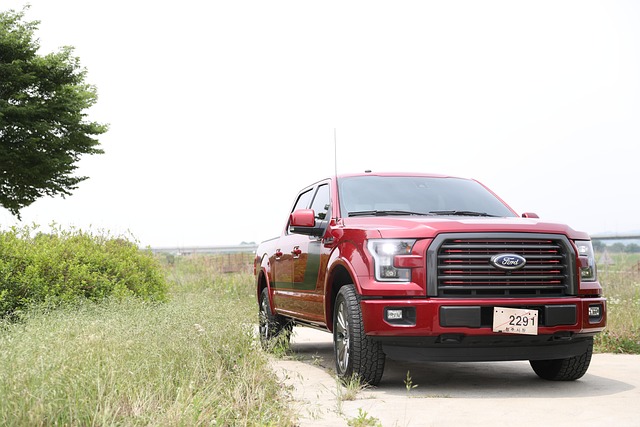Looking to register your car in California? This comprehensive guide walks you through every step. From understanding eligibility requirements and gathering essential documents, to visiting the California DMV and verifying your vehicle’s VIN using their services, we’ve got you covered. Learn how to pay registration fees and receive your certificate promptly. Ensure everything is in order with our detailed breakdown, including SEO keywords like ‘DMV vin verifier’.
- Understand Eligibility Requirements for Car Registration in California
- Gather Necessary Documents for Vehicle Registration
- Visit the California DMV and Complete the Registration Process
- Verify Your Vehicle's VIN (Vehicle Identification Number) Using DMV Services
- Pay Registration Fees and Receive Your Registration Certificate
Understand Eligibility Requirements for Car Registration in California

Before registering your car in California, it’s crucial to understand the eligibility requirements set by the Department of Motor Vehicles (DMV). One key aspect is ensuring that the vehicle meets all safety and emission standards. This includes a valid inspection, often conducted through a mobile vin verification or using a DMV-approved inspector, to check for any defects or issues with the car’s components. The Vehicle Identification Number (VIN) plays a vital role in this process as it allows authorities to verify the vehicle’s history and ensure it complies with all regulations.
Additionally, you must meet residency requirements. If you’re new to California, you’ll need to prove that you’ve established a primary residence within the state. This can be done through various documents such as utility bills or lease agreements. Furthermore, proper documentation, including proof of insurance and any applicable fees, is essential for a seamless registration process. These steps ensure that only eligible vehicles and owners are added to California’s vehicle registry.
Gather Necessary Documents for Vehicle Registration

Before heading to the DMV for vehicle registration, make sure to gather all the essential documents. This process varies slightly depending on whether you’re registering a new or used car, but there are some key pieces that apply to both scenarios. For a new vehicle, you’ll need proof of purchase, such as a sales receipt or dealer invoice, and the manufacturer’s certificate of origin (MCO). If you’re registering a used car, in addition to these documents, you may also require a Bill of Sale and a current odometer reading.
Don’t forget about the crucial role that a reliable mobile VIN verifier plays in this process. Using a service like this allows you to check the vehicle’s history and ensure it hasn’t been reported as stolen or had any significant damage. This includes performing a mobile VIN inspection, which offers convenience and peace of mind. By having all your documentation ready and utilizing available tools like a mobile vin verifier, the registration process at the DMV will be smoother and faster.
Visit the California DMV and Complete the Registration Process

After gathering all the necessary documents, it’s time to visit your local California DMV office. The registration process typically involves several steps, ensuring that your vehicle meets all legal requirements. One crucial step is to provide a valid Vehicle Identification Number (VIN) verifier, which can be obtained through a mobile vin inspection or a standard vin inspection service. This verification process ensures the authenticity of your vehicle’s details.
At the DMV, you’ll need to fill out registration forms, providing information about your vehicle and personal details. An official will guide you through the process, ensuring all fields are correctly completed. Remember to bring along your proof of insurance, as this is a legal requirement when registering a car in California. This efficient procedure empowers you to hit the road legally and enjoy your newly registered vehicle with peace of mind.
Verify Your Vehicle's VIN (Vehicle Identification Number) Using DMV Services

Before registering your car in California, it’s crucial to verify your vehicle’s Vehicle Identification Number (VIN). This unique 17-character code is essential for ensuring the vehicle’s authenticity and history. The California Department of Motor Vehicles (DMV) offers several services to help you with this process. One convenient method is using their online VIN verifier tool, which allows you to confirm the vehicle’s details, including its make, model, year, and any reported accidents or titles changes.
Additionally, the DMV provides mobile vin inspection services, offering a more flexible option for those who prefer not to visit a local office. This service enables a qualified inspector to conduct a thorough examination of your vehicle, verify the VIN, and ensure it matches the information in their records. Whether you opt for an online check or a mobile vin verifier, this step is critical in the registration process, ensuring both accuracy and compliance with California’s regulations.
Pay Registration Fees and Receive Your Registration Certificate

After completing your vehicle’s registration application at the California DMV, it’s time to pay the associated fees. This process varies slightly depending on whether you’re registering a new or used car. For new vehicles, the dealer typically handles this step during the purchase. If registering a used car, you’ll need to visit a nearby DMV field office and submit payment for the registration fee, vehicle license fee, and any other applicable charges. The California DMV offers various payment methods, including cash, check, debit card, or credit card.
Once your registration fees are paid, you will receive your Registration Certificate – also known as a Vehicle Registration or “pink slip.” This document is essential as it confirms your car’s legal status and proof of insurance. It’s crucial to keep this certificate on hand for future reference and to make any necessary updates if you sell your vehicle. Additionally, the DMV may use a DMV VIN verifier (or mobile VIN verification) to cross-reference the vehicle identification number (VIN) to ensure the accuracy of the information provided during registration.
Registering a car in California involves understanding eligibility criteria, gathering essential documents, visiting the DMV, verifying your vehicle’s VIN using their services, paying fees, and obtaining your registration certificate. This straightforward process ensures that you and your vehicle comply with state regulations, facilitating smooth navigation on California’s roads. Remember to utilize resources like the DMV vin verifier for a hassle-free experience.
